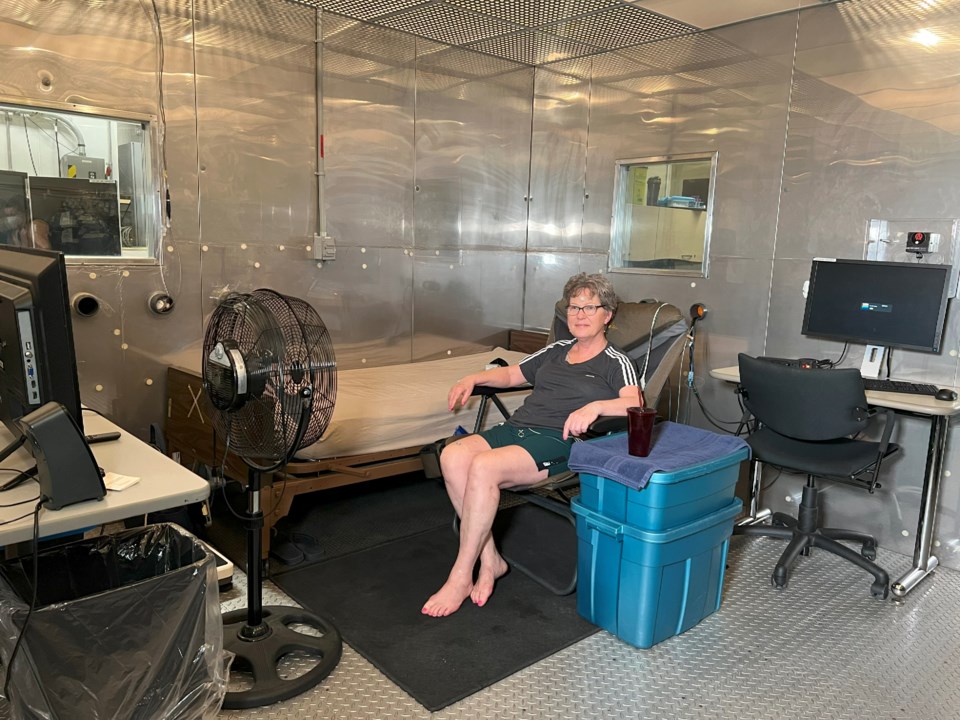Fans are not effective at cooling down the human body in temperatures over 33 degrees Celsius, a new Canadian study has found.
The research, published in the journal The Lancet Planetary Health, was carried out by experts from the University of Ottawa’s Human and Environmental Physiology Research Unit. They modelled more than 116,000 biophysical models that define how the body dissipates heat under the influence of a fan. They then used laboratory heat wave simulations to back up their conclusions.
The results suggest some extreme heat guides recently circulated to the public — including one promoted in a Google Search feature — could be handing out potentially dangerous information.
“There was this recent change that suggested fans will be effective up to 40 to 42 degrees Celsius,” said Robert Meade, a post-doctoral researcher who led the study.
“There's no reason we should change these [temperatures], and it might be dangerous if we do.”
To understand why giving bad advice about fans could be dangerous, you first need to understand how the human body cools itself, said Meade.
Two mechanisms to stay cool
Humans largely control their body temperatures in two ways. The first is through the natural exchange of heat through the skin. The bigger the gap in temperature between the inside and outside the body, the more heat is lost to the outside world.
“This is why you cool down very rapidly in a cold environment,” said Meade.
Like wind chill or blowing on a hot cup of coffee, air from a fan replaces the warm boundary layer of air that builds up over the skin. And that helps the body dissipate heat — at least until a point.
Once ambient temperature approaches skin temperature (about 35 C) the body struggles to cool down.
“Now we have the reverse effect,” said Meade. “We're continuously replacing the air over the skin with hotter ambient air, and it becomes like a convection oven.”
“It's the same reason why a turkey cooks quicker in a convection oven than a regular oven — we're continuing to kind of push that heat in.”
Of course, most people don’t behave like dead turkeys, and a healthy person will start sweating long before outside temperatures hit 35 C.
This is the second way a human body stays cool. For sweat to evaporate, it needs energy, which it pulls in the form of body heat.
Meade and his colleagues set out to answer the question, does a fan help you sweat, and therefore, cool better?
Study finds 'negligible' fan effect
Above 33 C, Meade said they found only a 0.3 C improvement in the ability of sweat evaporation to cool the body.
“It's almost negligible,” he said. “So if that person only has access to a fan, and it's going to be 35 C (and particularly 35 C indoors is where it matters), they're not going to be able to use that fan to blow air across themselves.”
Instead of a stand-alone cooling device, Meade said fans can still be used in the early morning and at night to help circulate air into a home from outside. He said fans could also be used with air conditioners to increase efficiency once an AC unit drops indoor temperatures below 30 C.
“If it's nighttime, you take some of the burden off of air conditioning. But when we get into those really hot conditions, the fan by itself is not going to cut it,” Meade said.
Public health advice full of 'inconsistencies'
The findings could help guide public health advice and bring it up to date with the latest science.
Since a 2021 heat wave killed at least 619 people in British Columbia, health authorities in the province have taken steps to update emergency response plans.
On its website, the BC Centre for Disease Control (BCCDC) advises British Columbians to use fans to circulate air when outside temperatures drop — a measure in line with the latest research from the University of Ottawa.
It warns older people, who may have trouble sweating, not to rely on fans when temperatures climb past 35 C. But it also implies fans could help people of other ages — something that flies in the face of what Meade and his colleagues found.
“There’s a lot of inconsistencies in what temperature we can use a fan up to,” Meade said.
A spokesperson for the BCCDC did not respond to Glacier Media's questions before publication time.
Meade said his lab is working with health agencies across the country, including Health Canada and the BCCDC, to standardize guidance.
Until then, Meade said when indoor temperatures climb past 35 C, the best thing people with only a fan can do is seek out a cooling centre, shopping mall or friend’s house with air conditioning.
And in the long run, he said more needs to be done to provide vulnerable people with ambient cooling devices like air conditioners and heat pumps.




